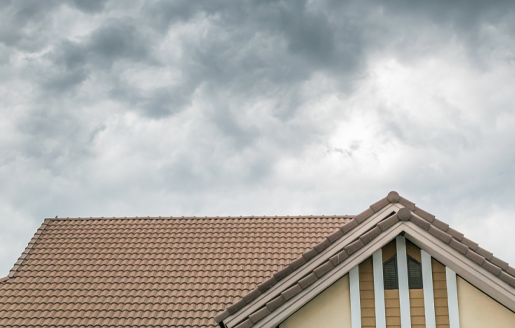TIPS TO REPAIRING COMMON HOME DAMAGE AFTER A STORM FROM AGEAS
Each year, properties in the UK face extensive storm damage. In February 2022 alone, insurers paid out roughly £500 million to customers whose homes were battered by three storms[1].
If your home has been affected by a storm, any damage caused will need dealing with as soon as possible. These are some of the most common types of storm damage caused, and steps you can take towards getting them repaired.
SAFETY FIRST
Before beginning any repair work, make sure to prioritise safety. If you have any concerns with the structure, electrics or any other potential hazards, don’t attempt any repairs. Contact your insurance provider, or the relevant service provider to ensure your safety – and likewise the safety of any professionals you plan to bring in to make repairs.
Only if you’re sure it’s safe, go ahead with the following steps.
ASSESS THE DAMAGE
First off, thoroughly check over your home, both indoors and out. This allows you to assess the extent of the damage. Look for signs of roof leaks, broken or cracked windows, damage to exterior walls, and fallen trees or branches.
It’s best to focus on those issues which pose an immediate threat. For example, if there’s roof damage or exposed areas that could allow further water infiltration, get these seen to straight away.
Be sure to take plenty of photos of the damage. These will come in useful when it comes to making a claim on your home insurance.
REPAIR YOUR ROOF
Roof damage is common after a storm, and addressing it quickly is essential to prevent further water damage. If you’re comfortable doing so, inspect the roof for missing or damaged tiles, cracks or gaps.
While it is possible to replace missing tiles and seal any cracks or gaps yourself, don’t attempt this unless you’re completely confident. Otherwise, it’s best to contact your insurance provider, or consult a professional roofing contractor. You should certainly do this if the damage is extensive, as it’ll need a thorough inspection and repair.
You can find a roofer in your area by searching the National Federation of Roofing Contractors (NFRC) or browsing trusted traders at Which?
WINDOW AND DOOR REPAIR
Any broken windows or doors compromise the security of your home, and also its weatherproofing. Even cracked windows shouldn’t be ignored, as these are likely to break much more easily.
Start by removing any broken glass and boarding up the openings to secure your home. If the damage is extensive or if there are structural issues, either contact your insurance provider, or consult a professional for assistance.
EXTERIOR WALL REPAIR
Check exterior walls for cracks, dents or other storm-related damage. You may be able to repair minor cracks with a suitable exterior caulking or sealant.
For more extensive damage, such as loose or missing cladding, get in touch with your insurance provider. Alternatively, contact a trusted builder to arrange repair or replacement.
STRUCTURAL REPAIR
If your home has suffered structural damage, such as leaning walls or compromised foundations, it’s essential to seek professional assistance. Structural repairs require expertise and specialised knowledge to ensure the safety and stability of your home.
Be sure to contact your insurance provider if you have concerns about structural damage. Alternatively, contact a structural engineer or a licensed contractor experienced in structural repairs to assess the damage. You can find a local engineer at The Institution of Structural Engineers.
WATER DAMAGE
Heavy rainfall or flooding can lead to water damage, including damage to contents, dampness or mould. In extreme cases, it can even compromise the structure of the property.
If water has entered your home, be sure to dry and dehumidify the affected areas as soon as possible. Use fans, dehumidifiers and open windows to promote air circulation. Remove any wet materials, such as carpeting, to prevent the growth of mould.
Find out more from Ageas on how to deal with water damage here, including non-weather-related water leaks.
AFTER YOUR REPAIRS, TAKE PREVENTATIVE MEASURES
After completing the necessary repairs, it’s a good idea to take preventive measures to protect your home against future storms. Find out from Ageas how to prevent the most common weather damage here.
Visit the Ageas weather hub for tips and guides to help you protect your home before, during and after extreme weather.
Original article written by Ageas

Visit the Ageas weather hub for tips and guides to help you protect your home before, during and after extreme weather.
Sources

